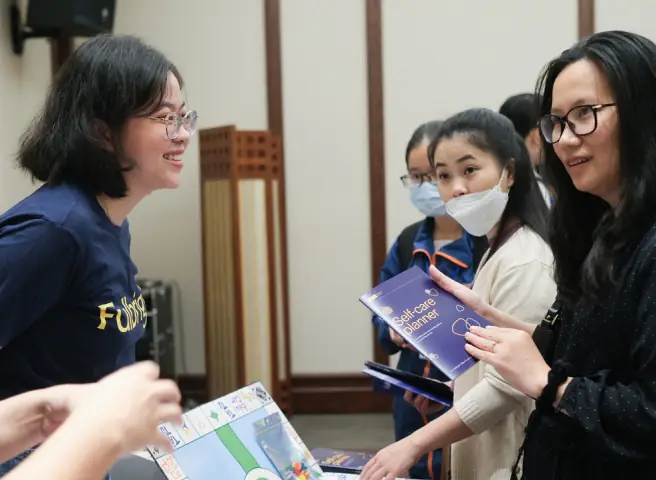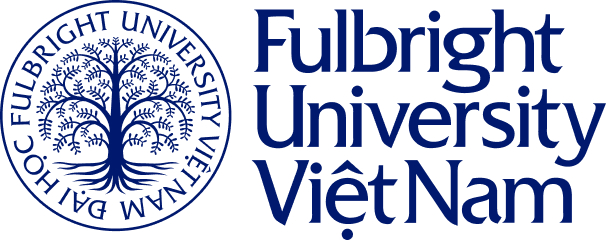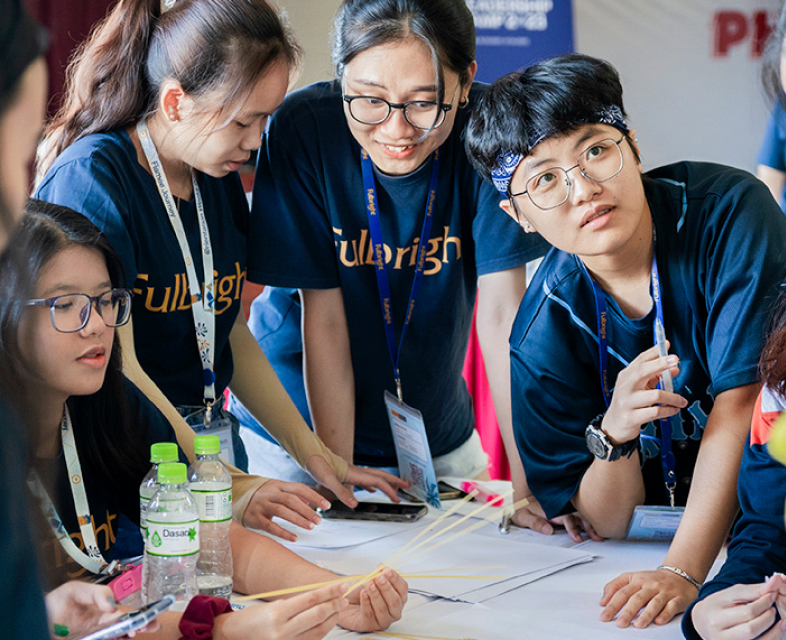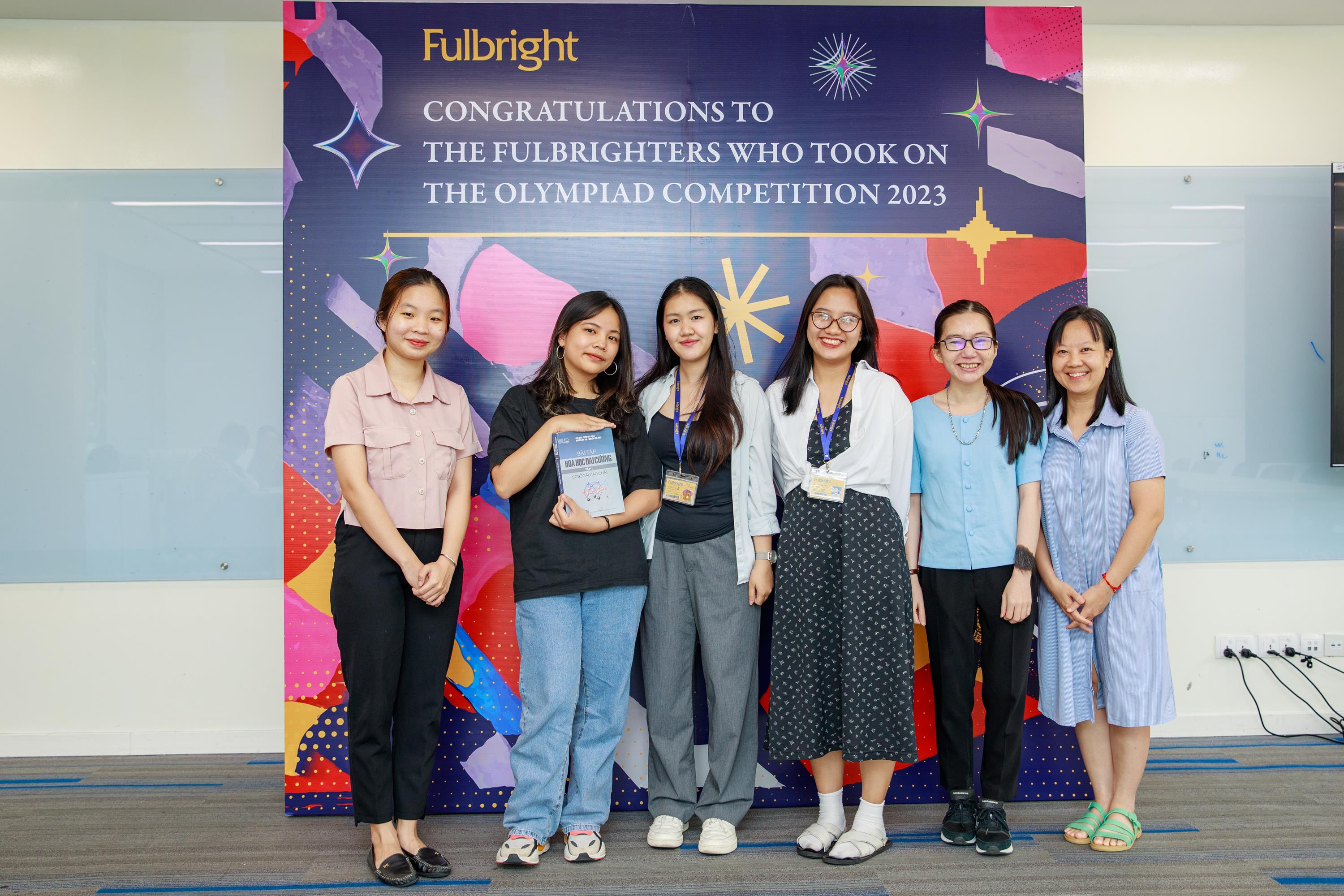
In a typical classroom, students learn by sitting in the classroom, writing down what the teacher says, and memorizing it later. In the first three-week module of the Co-Design Year, which took place last October, students explored a new classroom approach, including a unique learning experience: learning by teaching.
Cutting-edge approach
During Fulbright’s first module of the Co-Design Year, Learning to Co-Learn, the classroom experience itself was the subject. Undergraduate faculty prepared the first module as part of faculty sprints to craft lessons that developed students’ skills communicating, giving feedback, and analyzing strengths and weaknesses in coursework. Then, faculty taught in teams for two weeks. Finally, Co-Design students owned course creation in a student-led sprint, designing classes about Vietnam.
Sprints based on the scrum method have been used as an approach to developing productsin many start-ups in Silicon Valley. In a fixed time-frame, groups define goals, delineate work, and divide tasks.
A person serves as the product owner to provide the overall direction, and another person serves as the scrum master to manage tasks. With embedded feedback mechanisms, groups adjust along the way. Through this sprint process, faculty designed the module and students designed their courses, learning how courses are designed, prepared, and delivered and that courses need to be built upon by all involved.
Dr. Naoko Ellis said she and Dr. Ian Kalman thought a lot about what team teaching meant and how their perspectives on pedagogy and classroom management could build off each other.
“We were preparing for one class reading a piece on integrity, and we decided to recreate the experience with a panel discussion,” Dr. Ellis said. “Students saw how an anthropologist looked at the piece and question many assumptions; while, an engineer would be pragmatic and use the concept for team work.”
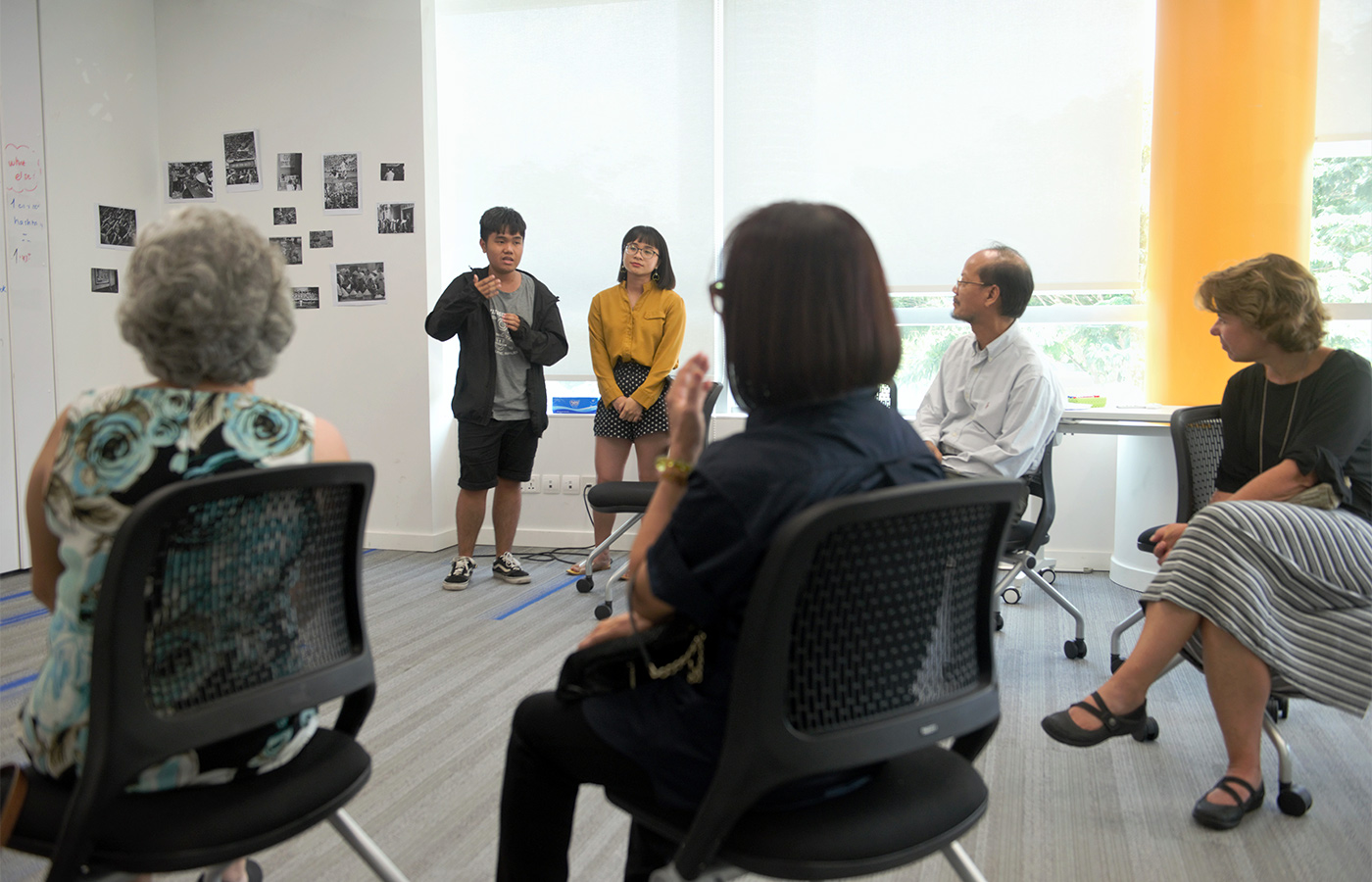

Co-Designer Nguyen Thi Thuy Dung said she was surprised at first when her professors commented on what was missing in the class or might have been overlooked. Then, her class started sharing their opinions on the material and giving feedback became habitual, she said.
Learning by teaching
After two weeks of courses, faculty served as scrum masters and product owners during the students’ sprint week. Reorganized into eight new groups, students created their own courses teaching their new professors about the rich culture of Vietnam. While the results were impressive, the process aired some challenges that the students worked through collaboratively.
Co-Designer Le Kieu Oanh’s group excitedly, yet nervously, tried to figure out what they wanted to teach faculty – their new students. She explained that her group discussed what they really wanted professors to take from the course, figuring out what was important to share and what was just a distraction.
After deciding on their topic, the students had to research it from various angles. One group wanted their professors to know more about the subsidy period.
Instead of just purely targeting the historic angle of the era, they went further and researched the anthropological and psychological experiences of the Vietnamese people at that time.
This group also thought of ways to help the professors experience this period first hand through a proposed live-action activity that reenacted how a market operated during the subsidy period.
Dr. Jill Siri described the transdisciplinary approach to teaching as a new experience for all involved. “Transdisciplinary thinking requires professors and students to approach a problem from multiple disciplines and understand how research strategies across disciplines lead to more holistic solutions,” she said.
At the end of the sprint week, students presented eight courses covering Vietnam’s regional differences, the subsidy period, food, drinks, music, and cultural values. While their initial presentations outlined the intended courses, faculty and staff signed up to take part in the full sessions led by the students later this semester.

Dr. Siri said the sprint method’s feedback measures contributed to student’s success over the week. “In a feedback session, my students recognized that communication was not good,” she said. “So, they decided to create a new, specific task to make sure everyone was on the same page.”
Kieu Oanh confirmed the intangibles mattered for their group and that they should be a part of any classroom environment. “Things like active listening, patience, and communication take thought and effort,” she said. “They are part of the experience, too.”
Learning to co-learn
After this first module, both the students and the faculty started to have a more tangible understanding of Fulbright’s co-learning environment. The students learn from real-world, applied perspectives and the faculty learn from a student’s perspective.
Both perspectives are being used to figure out what questions have been answered and those that have yet to be asked about the learning environment. Dr. Ellis elaborated on a sprint element that benefited both faculty and students.
“One of my favorite functions of a sprint is the parking lot. When you are trying to create something new, a lot of questions come up,” she said. “We put those questions in the parking lot and come back to them later. So, you still have a sense of a team marching forward, and not feeling stuck or being diverted.”
Dr. Chan ended saying that faculty and students were pleased with what they accomplished in the first module and looked forward to improving in future modules.
“When figuring out Learning to Co-Learn, there were a lot of unresolved issues. That is why we are doing these beta tests. We keep trying again,” he said. “I want to learn a lot with the students.”
Minh Chau – Kyle Witzigman


